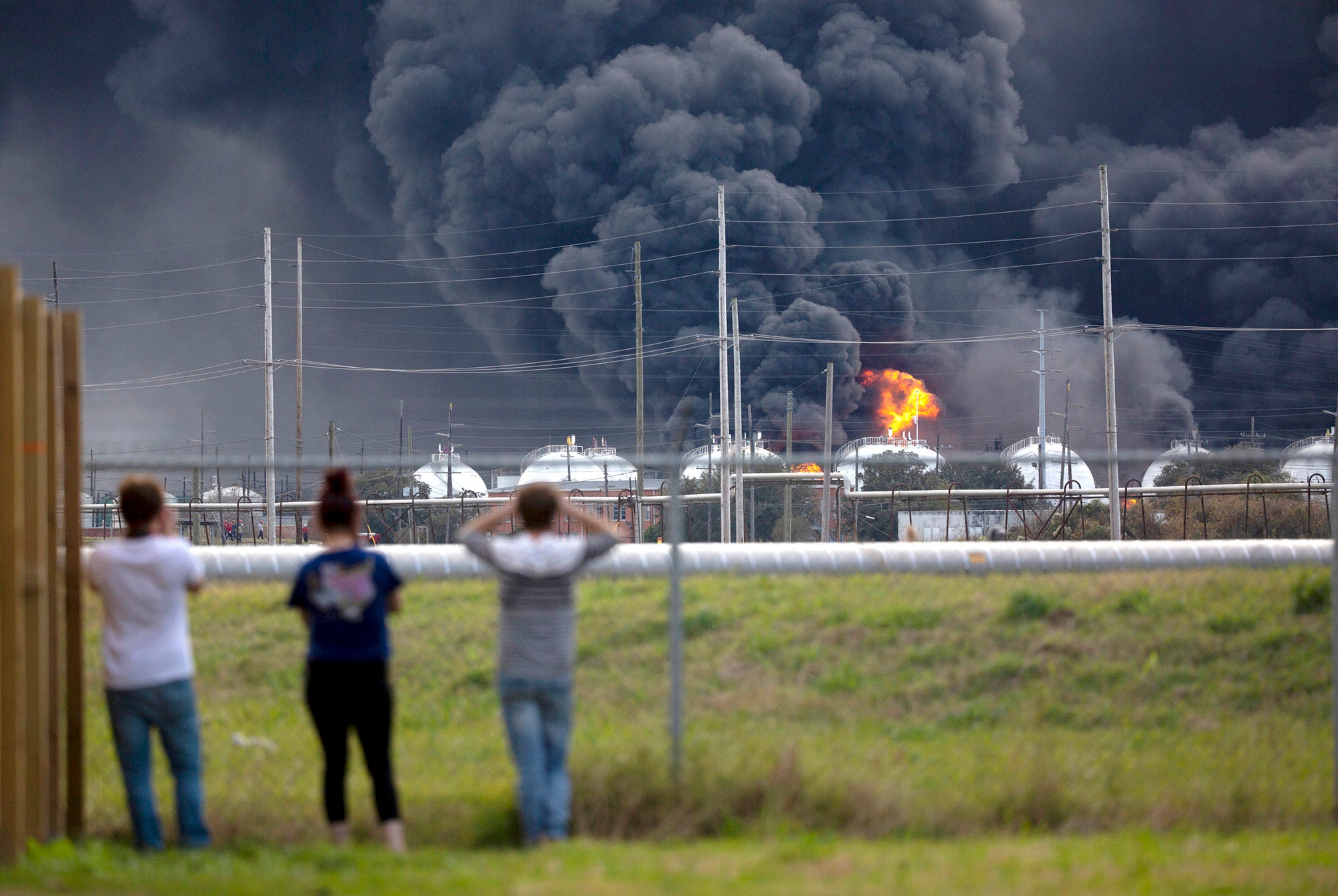The Country’s Deadliest Chemical Plants are Now Required to Prepare for Extreme Weather
A new EPA rule protects nearly 180 million people at risk of chemical disasters.

This page was published a year ago. Find the latest on Earthjustice’s work.
For years, Pam Nixon lived in a part of West Virginia known as “Chemical Valley” — an area surrounding the state’s capital, Charleston, that has historically been home to one of the largest concentrations of chemical plants in the United States.
“My neighbors and I live daily under the threat of serious injury and death because these plants handle such dangerous substances,” said Nixon. “I’m in my 60s, and throughout my life, I’ve had to tape up my windows, shelter in place and try to hide from contamination.”
The threat of a deadly chemical incident is never far. In 2008, an explosion at a pesticide manufacturing unit in Charleston killed two workers and injured eight. In 2014 , a chemical leak at a coal processing plant poisoned the drinking water for 300,000 people in Charleston and beyond. And in 2020, a fiery explosion at a Chemours plant killed one person and injured others, sending shrapnel flying across a river.

Pam Nixon, with People Concerned About Chemical Safety, has lived in West Virginia’s “Chemical Valley” for years. (Chris Dorst / Charleston Gazette-Mail via AP)
Dangerous chemical facilities are disproportionately located near lower-income communities and communities of color, like Nixon’s neighborhood in Institute, West Virginia, putting their health and lives at risk. And those risks are only going to increase as climate disasters become more frequent.
Recently, the Environmental Protection Agency (EPA) announced new safeguards to account for climate-related disaster risk in nearly 12,000 hazardous chemical plants. The new rule will help protect the 180 million people who, like Nixon and her neighbors, live in the worst-case scenario zones for a chemical disaster.
In 2017, Earthjustice sued the Trump administration for gutting revisions to a rule that would have protected people in high-risk areas like Nixon’s community from chemical disasters caused by extreme weather.
“Instead of working to protect people around the nation that face the same threat, what did [the Trump administration] do? Put higher corporate profits above the need to save our lives,” said Nixon.
While we’re celebrating the Biden administration’s EPA finalizing these stronger protections, several other high-priority rulemakings still must be finalized to go into effect.
What are the new safeguards?
- The new rule strengthens the Risk Management Plan (RMP), which oversees nearly 12,000 of the most hazardous chemical facilities, such as oil refineries, paper mills, water treatment plants, and chemical manufacturers.
- The rule now requires these facilities to protect people from the cascading effects of chemical releases stemming from extreme weather events like hurricanes and flooding, also known as “natech” incidents.
- Approximately one-third of these facilities — 3,856 — are in high climate-risk areas.
- Chemical disasters disrupt the lives of people who live near major industrial areas. Residents are forced to suddenly evacuate or shelter in place, and risk long-term exposure to deadly toxicants.
How did we get here?
- Following multiple fatal chemical disasters, the EPA under President Obama issued the “Chemical Disaster Rule” in 2017 to improve chemical safety.
- Shortly thereafter, the Trump administration delayed these revisions and then gutted them in 2019 at the request of the oil and chemical industry.
- Earthjustice and its clients sued in response to both actions, before the Biden administration revisited this suite of important chemical safety requirements with today’s rule.
People who live near these hazardous chemical facilities now face a “double disaster” of deadly chemical releases caused by extreme weather. We urge the chemical industry to implement these life-saving measures without delay.
Earthjustice’s Washington, D.C., office works at the federal level to prevent air and water pollution, combat climate change, and protect natural areas. We also work with communities in the Mid-Atlantic region and elsewhere to address severe local environmental health problems, including exposures to dangerous air contaminants in toxic hot spots, sewage backups and overflows, chemical disasters, and contamination of drinking water. The D.C. office has been in operation since 1978.